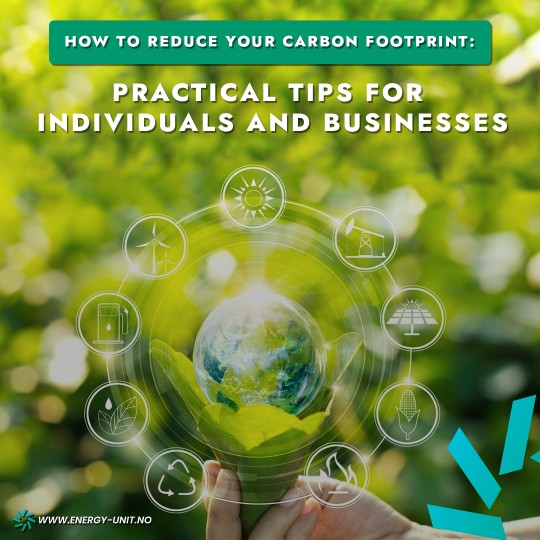Summary: With climate change becoming an increasingly pressing issue, reducing our carbon footprint is more important than ever. In this post, we’ll provide practical tips for individuals and businesses alike, so you can do your part in protecting the planet. From reducing energy consumption to switching to renewable energy sources, we’ll cover a range of strategies that can help you make a difference.
What is a Carbon Footprint?
Before diving into the tips, let’s first define a carbon footprint. Simply put, it’s the amount of greenhouse gases (primarily carbon dioxide) emitted from our daily activities. Everything we do, from driving a car to using electricity, contributes to our carbon footprint. By reducing our carbon footprint, we can help slow down the pace of climate change and protect our planet.
Practical Tips for Individuals
Reduce Energy Consumption – One of the easiest ways to reduce your carbon footprint is to reduce your energy consumption. Turn off lights and appliances when you’re not using them and unplug chargers when they’re not in use.
Choose Energy-Efficient Appliances – When it’s time to upgrade your appliances, choose ones that are energy-efficient. Look for products with the Energy Star label, which indicates that they meet energy efficiency guidelines set by the US Environmental Protection Agency.
Eat a Plant-Based Diet – Animal agriculture is a major contributor to greenhouse gas emissions. By choosing to eat a plant-based diet, you can significantly reduce your carbon footprint.
Use Public Transportation or Carpool – Transportation is another major contributor to carbon emissions. Consider taking public transportation, carpooling with colleagues, or walking or biking whenever possible.
Practical Tips for Businesses
Switch to Renewable Energy Sources – Businesses can significantly reduce their carbon footprint by switching to renewable energy sources like solar or wind power. Consider installing solar panels on your business’s roof or purchasing renewable energy credits.
Implement Energy-Efficient Practices – Just like individuals, businesses can reduce their energy consumption by implementing energy-efficient practices. This can include turning off lights and appliances when they’re not in use, using programmable thermostats, and upgrading to energy-efficient lighting and equipment.
Reduce Business Travel – Business travel is another major contributor to carbon emissions. Consider holding virtual meetings instead of in-person ones or choose low-carbon transportation options like trains or electric cars.
Support Sustainable Suppliers – Consider working with suppliers who prioritize sustainability in their operations. This can include using environmentally friendly packaging or sourcing materials from sustainable sources.
Conclusion:
Reducing your carbon footprint may seem like a daunting task, but by implementing these practical tips, you can make a significant impact. Whether you’re an individual or a business, there are many ways to reduce your carbon emissions and help protect our planet for future generations. Let’s all do our part in creating a more sustainable future.
